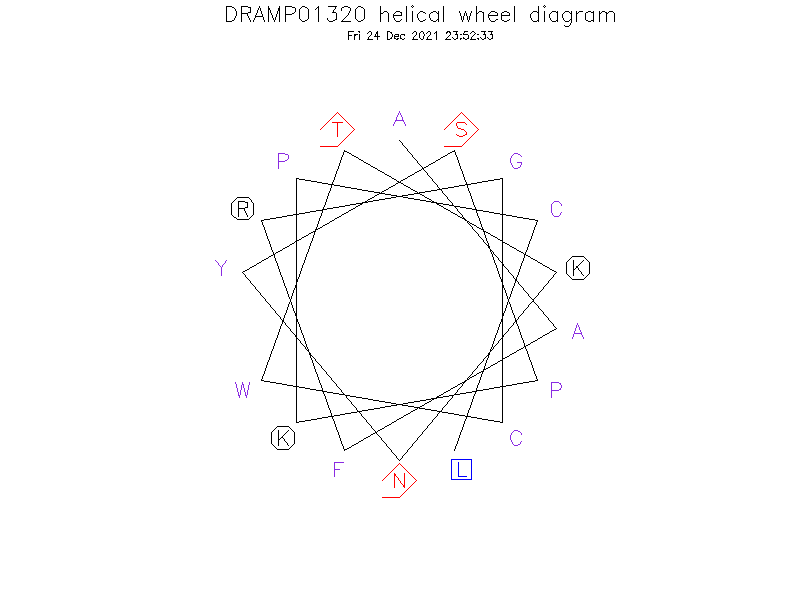General Information
-
DRAMP ID
- DRAMP01320
-
Peptide Name
- Ranacyclin-B-AL1 (Frogs, amphibians, animals)
-
Source
- Amolops loloensis (Ranidae frogs)
-
Family
- Not found
-
Gene
- Not found
-
Sequence
- AAFRGCWTKNYSPKPCL
-
Sequence Length
- 17
-
UniProt Entry
- No entry found
-
Protein Existence
- Not found
Activity Information
-
Biological Activity
- Antimicrobial, Antibacterial, Anti-Gram+
-
Target Organism
-
- Gram-positive bacteria: Staphylococcus aureus (MIC=51 µM), Bacillus subtilis (MIC=26 µM).
-
Hemolytic Activity
-
- No hemolysis information or data found in the reference(s) presented in this entry
-
Cytotoxicity
- No cytotoxicity information found in the reference(s) presented
-
Binding Target
- Not found
Structure Information
-
Linear/Cyclic
- Cyclic
-
N-terminal Modification
- Free
-
C-terminal Modification
- Free
-
Nonterminal Modifications and Unusual Amino Acids
- Disulfide bond between Cys6 and Cys16.
-
Stereochemistry
- L
-
Structure
- Not found
-
Structure Description
- Not found
-
Helical Wheel Diagram
-
PDB ID
- None
-
Predicted Structure
- There is no predicted structure for DRAMP01320.
Physicochemical Information
-
Formula
- C88H132N24O22S2
Absent Amino Acids
- DEHIMQV
Common Amino Acids
- ACKP
Mass
- 1942.28
PI
- 9.39
Basic Residues
- 3
Acidic Residues
- 0
Hydrophobic Residues
- 5
Net Charge
- +3
-
Boman Index
- -21.42
Hydrophobicity
- -0.465
Aliphatic Index
- 34.71
Half Life
-
- Mammalian:4.4 hour
- Yeast:>20 hour
- E.coli:>10 hour
Extinction Coefficient Cystines
- 7115
Absorbance 280nm
- 444.69
Polar Residues
- 7
DRAMP01320
Comments Information
Function
- Has antibacterial activity.
Literature Information
- ·Literature 1
-
Title
- Bi-functional peptides with both trypsin-inhibitory and antimicrobial activities are frequent defensive molecules in Ranidae amphibian skins.
-
Pubmed ID
- 21927839
-
Reference
- Amino Acids. 2012 Jul;43(1):309-316.
-
Author
- Yan X, Liu H, Yang X, Che Q, Liu R, Yang H, Liu X, You D, Wang A, Li J, Lai R.

